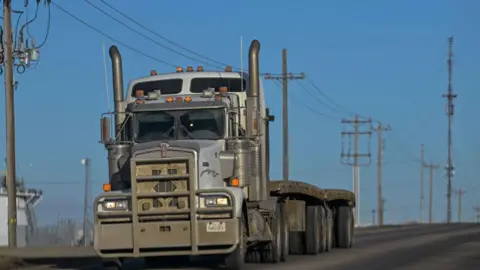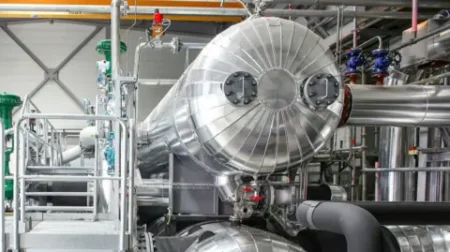### Trucking’s Uneasy Relationship with New Technology
In recent years, the trucking industry has been grappling with the integration of innovative technologies, altering not just the transport landscape but also the livelihoods of drivers. As advancements like digital applications come into play, they present the chance for improved efficiency and operations; however, they simultaneously pose significant challenges concerning driver compensation and job stability.
Jared, a Canadian truck driver with over two decades of experience, reflects on the vast changes brought about by technology. He began his career hauling food items and wine, a far cry from his current role, which includes touring with a country music star while managing the logistics of transporting instruments and equipment. Unlike earlier times when truckers relied on payphones and pagers to connect with job opportunities, today, Jared utilizes a variety of devices – a laptop, tablet, and two smartphones – to secure work virtually at the touch of a button. In his experience, this digitization has made operations more efficient, although he feels the consequences of “Uberisation”— a term coined to describe platforms that digitally connect truckers with freight— have made wages increasingly competitive, thereby driving them down significantly.
During the pandemic, Jared notes that he could charge $3 per mile; however, current market conditions have seen those rates plummet to as low as $1.10 per mile, particularly on routes from cities like Toronto to Los Angeles. Moreover, rising fuel costs further exacerbate the issue, greatly affecting overall earnings.
In Canada, the quick adoption of digital freight platforms has contributed to the “Uberisation” of trucking; eight major platforms, including Uber Freight, now dominate the market. This shift capitalizes on a previously fragmented industry where small operators predominated, with data indicating that more than 80% of firms employ fewer than five individuals. Christopher Monette from Teamsters Canada, a union representing over 130,000 workers including truck drivers, expresses grave concerns about this transformation. Monette stresses that stagnant wage growth over the past 25 years may worsen with the emergence of gig-style employment, particularly threatening larger, unionized companies that prioritize worker safety and welfare.
The skepticism surrounding these digital platforms is not entirely unfounded. While companies like Uber Freight promote flexibility and choice, concerns remain among drivers regarding the adequacy of their wages. Uber Freight’s spokesperson defended their approach by highlighting their platform’s adaptability. Carriers can select loads based on personal preferences ranging from route specifics to types of goods, and benefit from real-time market data that supports efficient scheduling.
Innovative companies like Freightera, founded by Eric Beckwitt in Vancouver, are making waves in digital trucking services. Beckwitt’s platform allows drivers and clients to access an extensive database of routes—roughly 20 billion options—enabling them to find work more quickly without fixed prices imposed. His vision for the future of freight transportation involves using artificial intelligence (AI) to streamline bookings and further reduce inefficiencies in the logistics process. The ambition is to create a fully automated system capable of assigning cargo and managing operations with precision and transparency.
This technology is also expanding globally, with countries like Kenya incorporating digital trucking solutions into their freight systems. Jean-Claude Homawoo, co-founder of the LORI platform, notes that the majority of the country’s inland freight is transported via road. Since LORI’s inception in 2016, it has developed a collaborative network of 20,000 trucks, facilitating access to fully loaded routes while maximizing efficiency.
Although some positions may be at risk due to evolving technologies, such as driverless vehicles beginning their trials in the United States and China, many industry observers, including Beckwitt, express confidence in the future of trucking. They envision a balance where human expertise will still play a crucial role alongside automation, emphasizing the importance of gradual integration to ensure safety and reliability on our roadways.
In summary, while technology’s impact on the trucking industry presents opportunities for greater efficiency and performance improvements, it raises critical questions regarding drivers’ economic well-being, market stability, and operational transparency. The quest remains to ensure that as the sector modernizes, it does so in a manner that supports those who have long been the backbone of its success.











